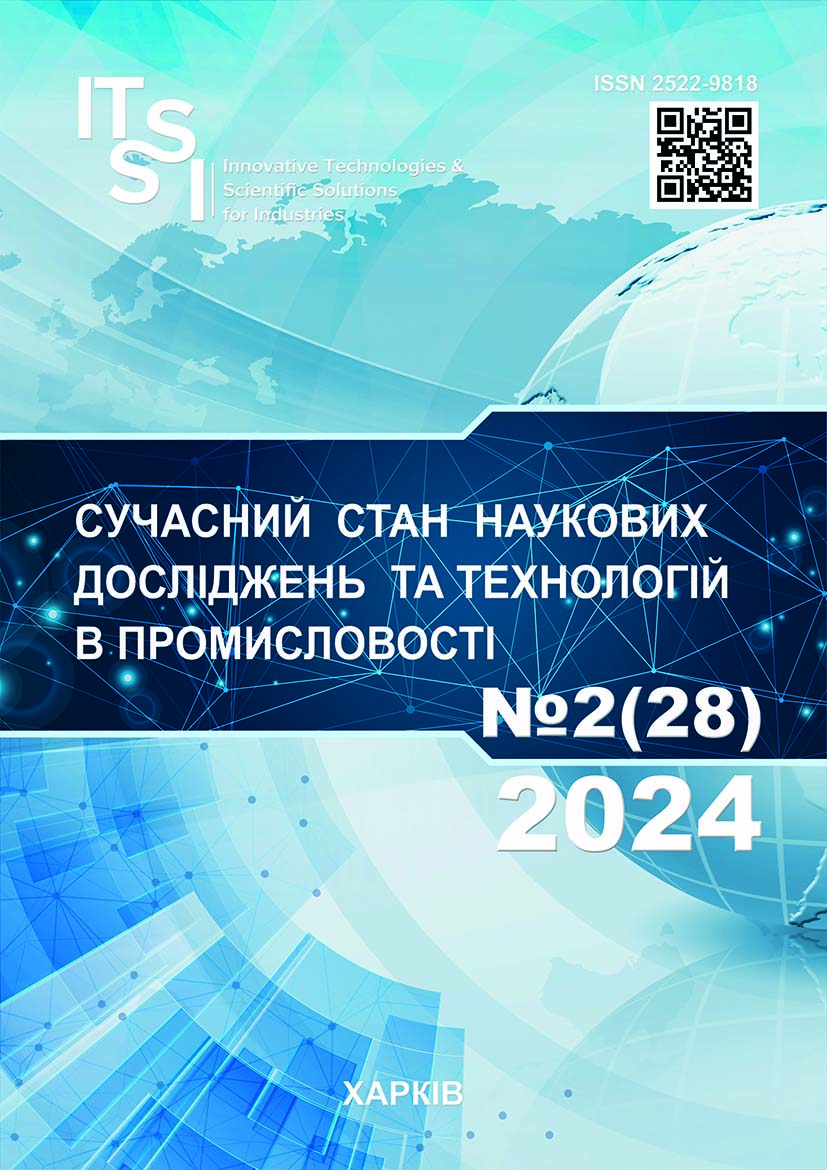Узагальнена функціональна модель системи асистування людям із вадами зору
DOI:
https://doi.org/10.30837/2522-9818.2024.28.006Ключові слова:
система; асистент; зір; LiDAR; відео; траєкторія; прогнозування; інтелектуальна система; розпізнавання; класифікація.Анотація
Предметом дослідження є створення системи інтелектуального асистування для людей з вадами зору. У наш час завдання створення ефективних систем інтелектуального асистування, що дають змогу людям, які мають проблеми із зором, отримати максимальну незалежність, є важливою та актуальною, оскільки наявні системи мають низку недоліків, таких як обмежена автономність, обмежена інтеграція з іншими пристроями та системами, обмежений аналіз динамічних перешкод та обмежені можливості зворотного зв’язку з користувачем, які здебільшого зводяться лише до голосового супроводу. Метою роботи є створення узагальненої функціональної моделі системи інтелектуального асистування людям з вадами зору, яка має підвищену автономність, інтеграцію з іншими пристроями та системами, здатність аналізувати динамічні об’єкти та передбачувати траєкторію їхнього руху, забезпечувати різноманітний зворотний зв’язок з користувачем. Для досягнення поставленої мети були виконані такі завдання: створено узагальнену функціональну модель запропонованої системи інтелектуального асистування людям із вадами зору; обґрунтувано функціональні залежності складових модулів розробленої моделі; проаналізовано базові модулі запропонованої моделі системи. Упроваджені такі методи: функціональне моделювання, системний аналіз. Досягнуті результати: запропоновано функціональну модель системи інтелектуального асистування для людей з вадами. Ця система має переваги, якщо порівнювати з наявними аналогами за низкою функціональних можливостей: детектування статичних та динамічних перешкод із передбачення траєкторії руху динамічних перешкод, здатність роботи в різних умовах (у приміщенні, на вулиці, у світлий або темний час, за різних погодних умов), підтримка інтеграції інших систем та пристроїв, високий рівень автономності. Висновки: розробленій моделі системи властиві підвищена автономність, інтеграція з іншими пристроями та системами, здатність аналізувати динамічні об’єкти та передбачувати траєкторію їх руху, а також забезпечувати різноманітний зворотний зв’язок з користувачем.
Посилання
References
IAPB (2020), "Global Estimates of Vision Loss. The International Agency for the Prevention of Blindness", available at: https://www.iapb.org/learn/vision-atlas/magnitude-and-projections/global/ (last accessed 25 March 2024).
WHO (2023), "Blindness and vision impairment. World Health Organization", available at: https://www.who.int/news-room/fact-sheets/detail/blindness-and-visual-impairment (last accessed 25 March 2024).
Lynsey, K. Romo,1, Cimmiaron, Alvarez, Melissa, J. Taussig (2023), "An examination of visually impaired individuals communicative negotiation of face threats", Journal of Social and Personal RelationshipsVolume 40, Issue 1, January 2023, DOI: https://doi.org/10.1177/02654075221114048
Samyak, Lalit, Wecapable (2021), "Daily Life Problems, Struggle and Challenges Faced by Blind People. Wecapable", available at: https://wecapable.com/problems-faced-by-blind-people/ (last accessed 25 March 2024)
Shubham, Melvin Felix, Sumer, Kumar, A. Veeramuthu (2018), "A Smart Personal AI Assistant for Visually Impaired People", Proceedings of the 2nd International Conference on Trends in Electronics and Informatics (ICOEI 2018), DOI: http://dx.doi.org/10.1109/ICOEI.2018.8553750
Xiaochen, Zhang, Xiaoyu, Yao, Yi Zhu, Fei Hu (2019), "An ARCore Based User Centric Assistive Navigation System for Visually Impaired People", Appl. Sci. 9(5), 989 р, DOI: https://doi.org/10.3390/app9050989
Bineeth, Kuriakose, Raju, Shrestha, Frode, Eika Sandnes (2023), "DeepNAVI: A deep learning based smartphone navigation assistant for people with visual impairments", Expert Systems with Applications 212 (2023) 118720, DOI: https://doi.org/10.1016/j.eswa.2022.118720
Audun, Brunes, Trond, Heir (2021), "Serious Life Events in People with Visual Impairment Versus the General Population", Int. J. Environ. Res. Public Health, 18, 11536 р, DOI: https://doi.org/10.3390/ijerph182111536
Kaushal, Kumar (2023), "An intelligent Assistant for the Visually Impaired & blind people using machine learning, International Journal of Imaging and Robotics 20(3)". available at: https://www.researchgate.net/publication/342561852_An_intelligent_Assistant_for_the_Visually_Impaired_blind_people_using_machine_learning (last accessed 25 March 2024)
Surabhi, Suresh, Sandra S, Aisha Thajudheen, Subina Hussain, Amitha R (2023), "An Intelligent Voice Assistance System For The Visually Impaired People", International Journal of Engineering Research & Technology (IJERT) Volume 11, Issue 04 (2023), DOI: https://doi.org/10.17577/IJERTCONV11IS04022
"YOLOv9: A Leap Forward in Object Detection Technology", available at: https://docs.ultralytics.com/models/yolov9/ (last accessed 22 May 2024).
Real, S., Araujo, A. (2029), "Navigation systems for the blind and visually impaired: Past work, challenges, and open problems" Sensors. Vol. 19. №. 15. 3404 р. DOI:10.3390/s19153404
Bhowmick, A., Hazarika, S. M. (2017), "An insight into assistive technology for the visually impaired and blind people: state-of-the-art and future trends", Journal on Multimodal User Interfaces. Т. 11. Р. 149–172. DOI: 10.1007/s12193-016-0235-6
Elmannai, W., Elleithy, K. (2017), "Sensor-based assistive devices for visually-impaired people: Current status, challenges, and future directions", Sensors. Vol. 17. №. 3. Р. 565. DOI: 10.3390/s17030565
Sayama, H. (2015), "Introduction to the modeling and analysis of complex systems. Open SUNY Textbooks". available at: https://open.umn.edu/opentextbooks/textbooks/233 (last accessed 25 March 2024)
Yildirim, U., Campean, F., Williams, H. (2017), "Function modeling using the system state flow diagram", Artificial Intelligence for Engineering Design Analysis and Manufacturing. Vol.31. №. 4. Р. 413–435. DOI: 10.1017/S0890060417000294
##submission.downloads##
Опубліковано
Як цитувати
Номер
Розділ
Ліцензія

Ця робота ліцензується відповідно до Creative Commons Attribution-NonCommercial-ShareAlike 4.0 International License.
Наше видання використовує положення про авторські права Creative Commons для журналів відкритого доступу.
Автори, які публікуються у цьому журналі, погоджуються з наступними умовами:
Автори залишають за собою право на авторство своєї роботи та передають журналу право першої публікації цієї роботи на умовах ліцензії Creative Commons Attribution-NonCommercial-ShareAlike 4.0 International License (CC BY-NC-SA 4.0), котра дозволяє іншим особам вільно розповсюджувати опубліковану роботу з обов'язковим посиланням на авторів оригінальної роботи та першу публікацію роботи у цьому журналі.
Автори мають право укладати самостійні додаткові угоди щодо не комерційного та не ексклюзивного розповсюдження роботи у тому вигляді, в якому вона була опублікована цим журналом (наприклад, розміщувати роботу в електронному сховищі установи або публікувати у складі монографії), за умови збереження посилання на першу публікацію роботи у цьому журналі.
Політика журналу дозволяє і заохочує розміщення авторами в мережі Інтернет (наприклад, у сховищах установ або на особистих веб-сайтах) рукопису опублікованої роботи, оскільки це сприяє виникненню продуктивної наукової дискусії та позитивно позначається на оперативності та динаміці цитування опублікованої роботи.














